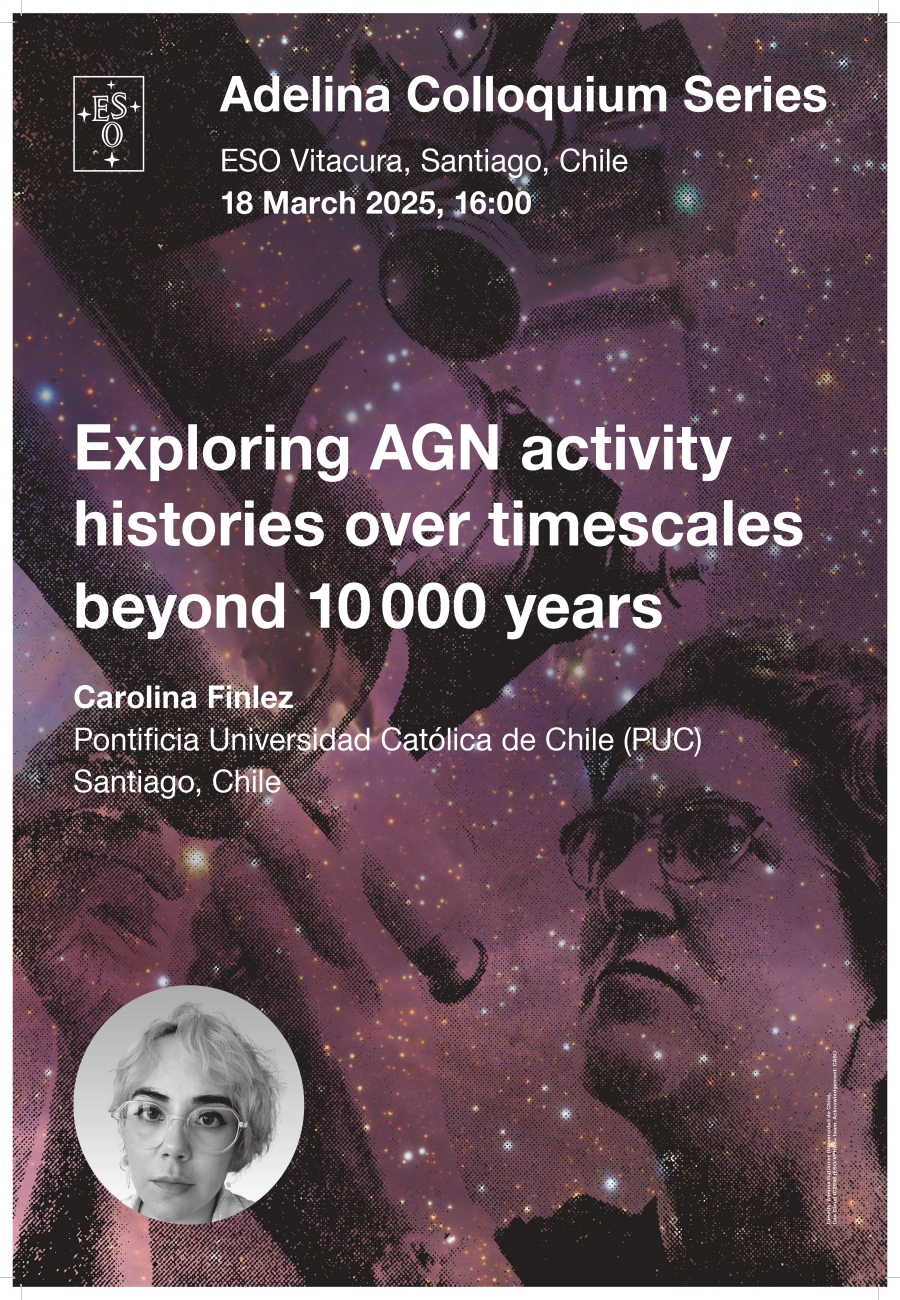Exploring AGN Activity Histories Over Timescales Beyond 10,000 Years
In this work we explore the fascinating world of voorwerpjes: galaxies that show two conflicting features, at large scale they present extended emission line regions (EELRs), that can reach tens of kpc. Their ionization state suggest they were illuminated by a very powerful active galactic nuclei (AGN). However, on the small scale (~10 pc), in the nucleus, we find very dim low-luminosity AGN. Considering the light time travel to the cloud, these objects suggest that the EELRs are relics, or ‘light-echoes’, of a once bright quasar, that has since faded. We analyze a sample of these objects using IFS from VLT/MUSE. We reconstruct the luminosity history of the AGN by probing the ionization state at different regions of the EELRs. We compare our observations with simulations from the photo-ionization code CLOUDY, obtaining the luminosity required to ionize the cloud to the state is observed, at each radius from the nucleus. We found AGNs that have faded 2-4 orders of magnitude over the past 40,000-80,000 years, a timescale far beyond what can be directly monitored in human timescales, opening a new window into the study of AGN variability in long timescales.

